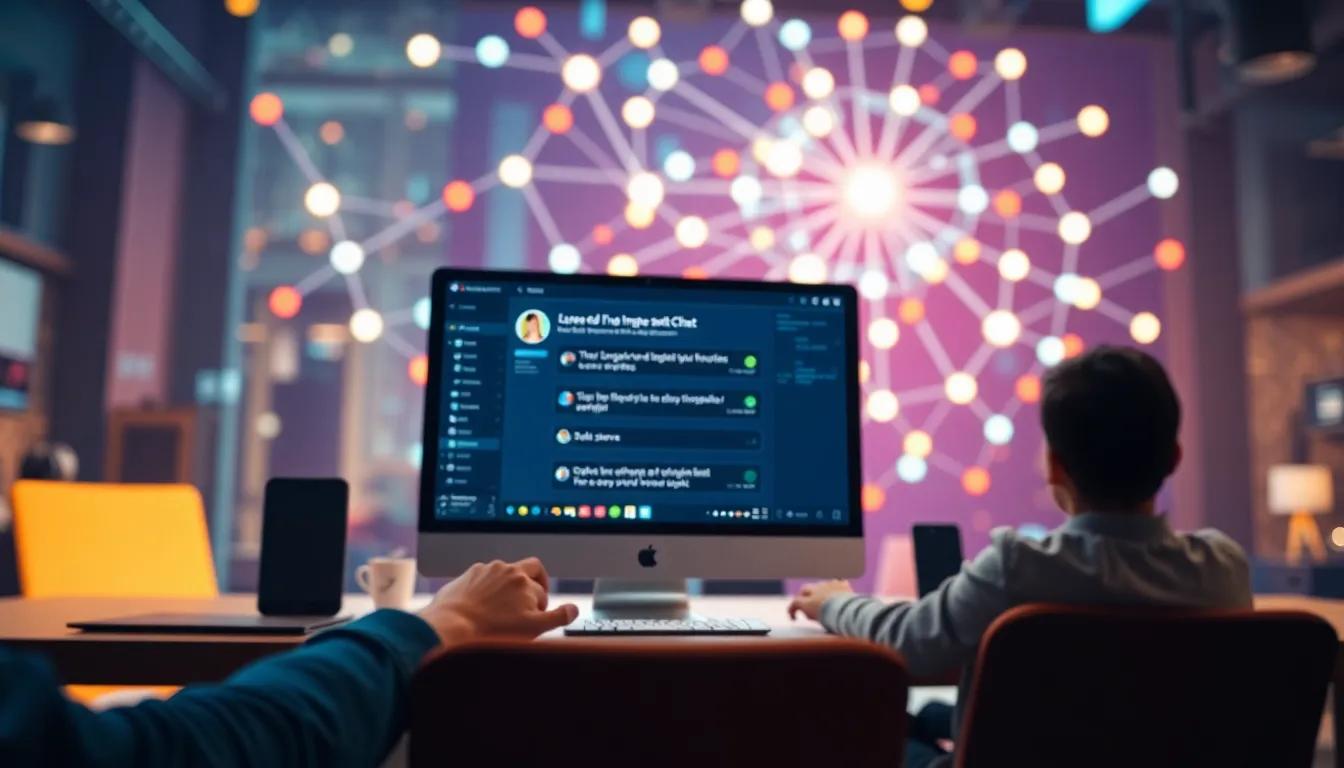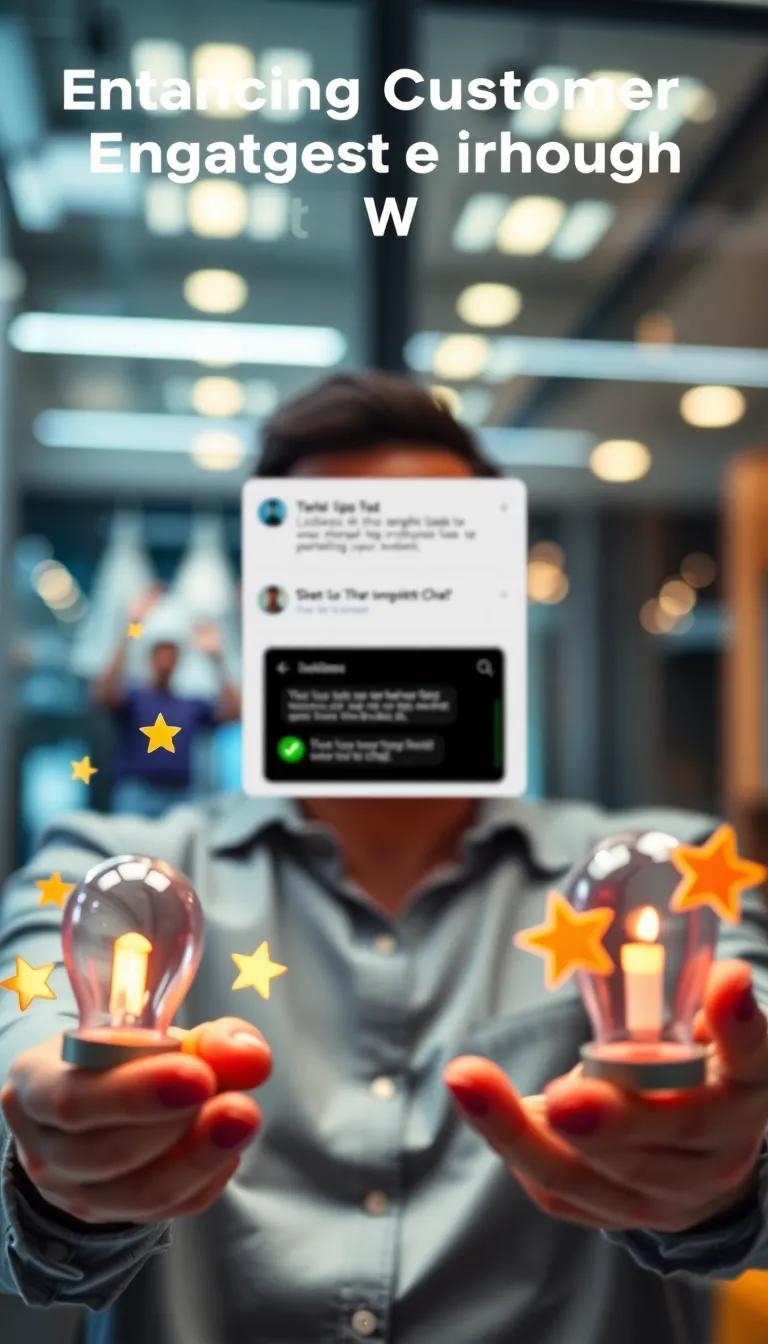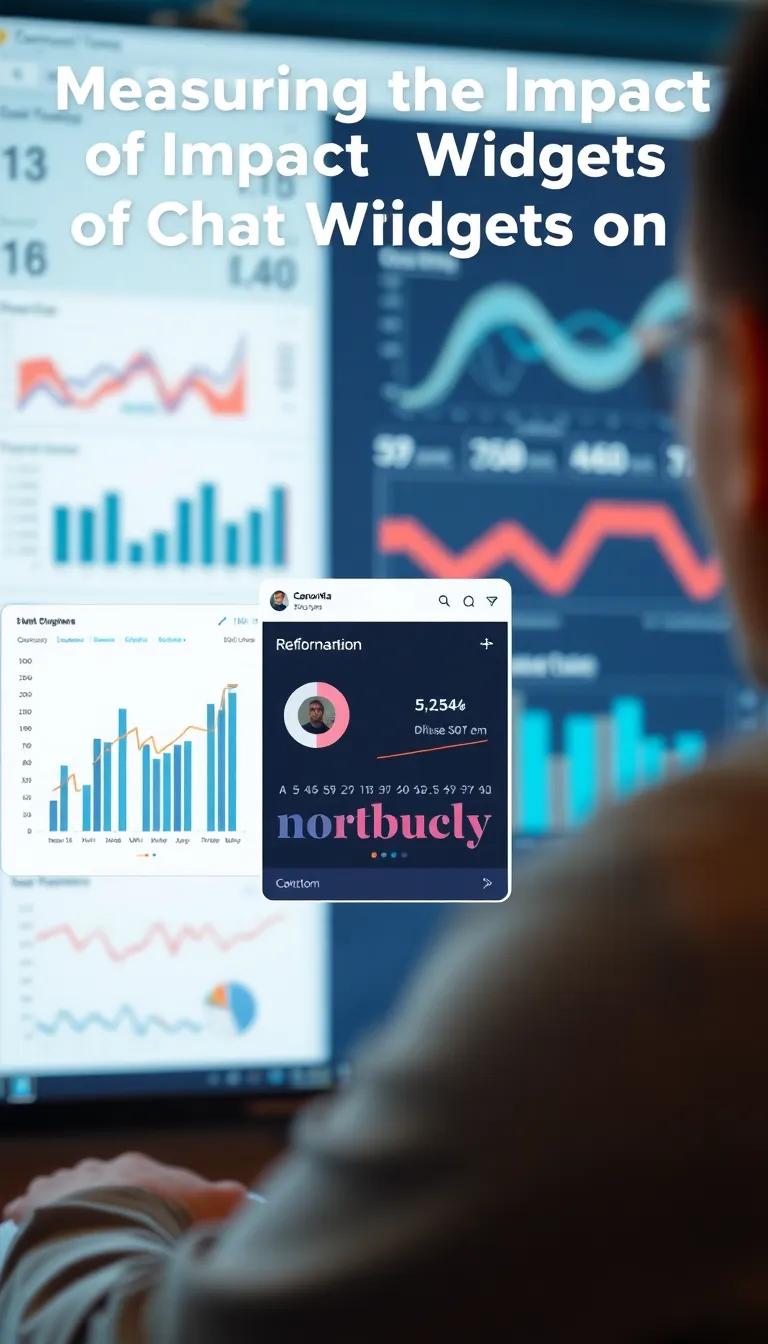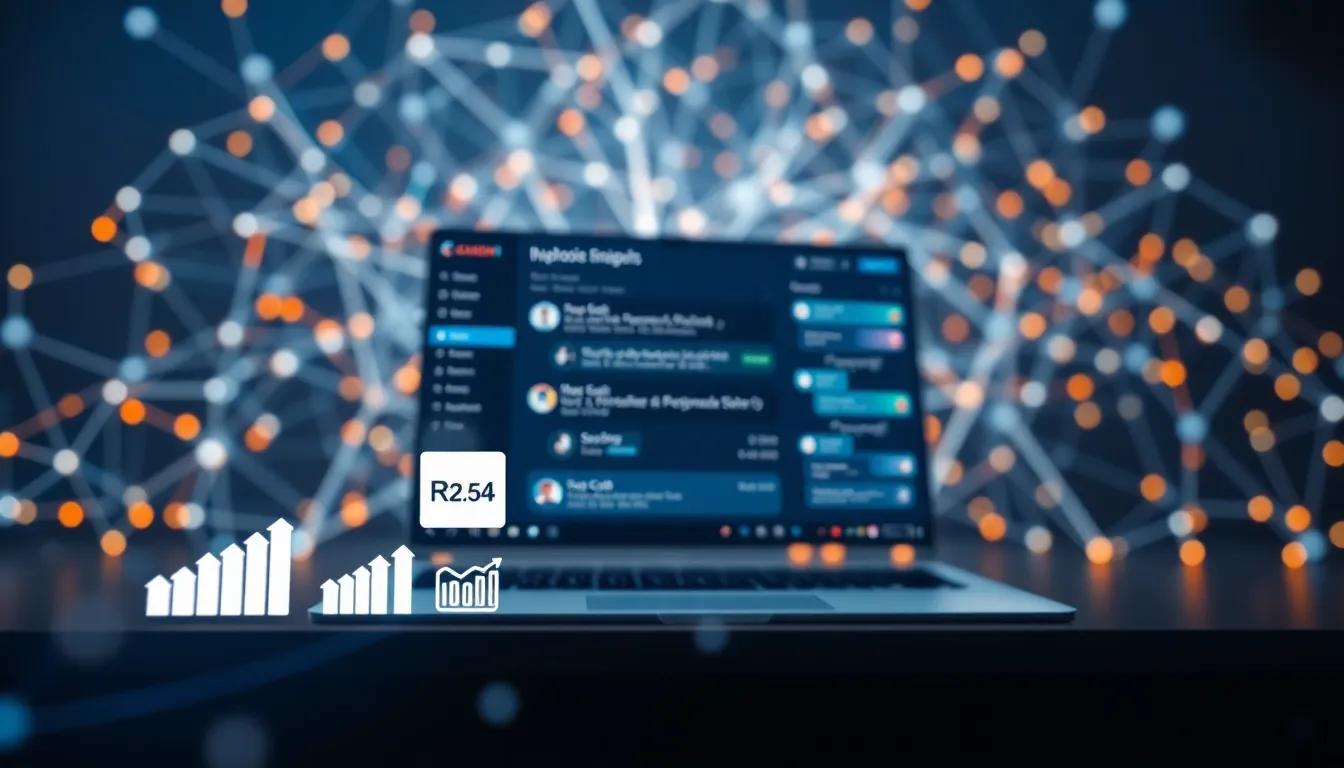Introduction
In an increasingly competitive online marketplace, businesses must adopt effective retention strategies to foster customer loyalty. One such approach involves utilizing free website chat widgets, which facilitate real-time communication between businesses and customers. These tools not only enhance user experience but also contribute significantly to retention, as they allow for immediate support and interaction. This article explores the multifaceted benefits of integrating a chat widget into a website and how it can be a game changer in keeping customers engaged with your brand.
Retention strategy encompasses a variety of methods aimed at preventing customer churn and building long-lasting relationships. By employing a chat widget, organizations can provide instant responses to customer queries, resulting in increased satisfaction and loyalty. This exploration will delve into specific retention techniques linked to chat widgets while offering insights on maximizing their effectiveness. By understanding these dynamics, businesses can leverage them to create a loyal customer base that contributes to sustained growth and success.
Understanding Retention Strategy Enhance Customer Relationships Through Effective Engagement Techniques
Retention strategy plays a pivotal role in customer relationship management, serving as a critical means to foster loyalty among a business’s clientele. At its core, retention strategy involves a series of planned efforts and activities designed to keep existing customers engaged and satisfied over the long term. This approach recognizes that retaining customers is often more cost-effective than acquiring new ones, making it integral for sustainable business growth.
The significance of a well-defined retention strategy is underscored by its ability to cultivate deeper relationships with customers. By actively working to keep customers happy, businesses not only increase their lifetime value but also benefit from positive word-of-mouth and enhanced brand reputation. Loyal customers tend to spend more and are more likely to return for repeat purchases, creating a cycle that contributes to overall business health.
Effective retention strategies can revolve around several key techniques aimed at maintaining high levels of customer satisfaction. Personalization is among the most powerful of these techniques; leveraging customer data allows businesses to tailor communications, offers, and services to meet individual preferences. Implementing loyalty programs is another common practice, where incentives such as discounts, rewards, or exclusive access encourage repeat business.
Gathering and acting on customer feedback is instrumental in refining retention strategies. This can be achieved through surveys, direct communication, or the analysis of buying patterns. Active engagement through various channels ensures customers feel valued and understood, promising a more robust connection to the brand.
Investing in technologies that enhance customer interactions, such as a free website chat widget, serves to strengthen these retention efforts. Such tools facilitate real-time communication, enabling businesses to address customer queries and concerns promptly. This immediate support makes customers feel prioritized, increasing the likelihood of their ongoing patronage. Ultimately, a well-executed retention strategy, complemented by efficient engagement techniques, creates an environment that promotes customer loyalty, ensuring a thriving business landscape in the long run.
The Role of Chat Widgets in Customer Communication
Facilitating Direct Communication
Chat widgets serve as an immediate link between businesses and customers, creating a platform for direct communication that is both efficient and user-friendly. These tools integrate seamlessly into websites, enabling visitors to initiate conversations with support teams effortlessly. By embedding a chat widget, businesses establish a channel where inquiries can be addressed in real time, enhancing responsiveness and satisfaction.
The fundamental functionalities of chat widgets include live chat, automated responses, and historical conversation tracking. Live chat empowers customer service representatives to interact with multiple clients simultaneously, addressing their needs on a case-by-case basis. This level of interaction not only fosters a personal connection but also streamlines resolution times, which proves vital in retaining customers. Automated responses can manage basic queries, guiding users through frequently asked questions without delay, which helps maintain engagement even outside typical business hours.
Another significant feature of chat widgets is their ability to log and save conversation histories. This functionality allows for consistent follow-up communications and helps service teams understand customer preferences and past interactions. It cultivates a more personalized experience, as agents can refer back to previous discussions, making clients feel valued and understood.
Enhancing Customer Experience
Effective utilization of chat widgets can drastically improve overall customer experience. By equipping live chat tools with intuitive design and accessibility features, businesses ensure that help is always just a click away. Customizable elements allow brands to tailor the appearance and messaging of the widget to align with their identity, ensuring that clients feel comfortable when engaging. For example, proactive chat prompts can be initiated based on user behavior, such as lingering on a product page or hesitating during checkout, effectively nurturing potential leads.
Chat widgets enable the collection of valuable feedback and data, which can inform business strategies and customer retention efforts. By analyzing interactions, businesses can identify pain points and improve their services accordingly. This continuous improvement process not only optimizes customer satisfaction but also strengthens brand loyalty.
Chat widgets are essential tools in enhancing direct communication between businesses and their customers. By leveraging their full range of features, companies can create an engaging environment that encourages dialogue, builds loyalty, and ultimately boosts retention.
Enhancing Customer Engagement Through Chat Widgets
Boosting Loyalty with Retention Strategies
Utilizing chat widgets effectively can significantly enhance customer engagement, serving as a key element in retention strategies aimed at boosting loyalty. Employing proactive messaging techniques is vital for creating a more dynamic interaction between businesses and their customers. Proactive messaging can take many forms, including welcoming messages, personalized greetings, and timely offers based on customer behavior. By anticipating customer needs and reaching out before they even ask, businesses demonstrate they are attentive and invested in their customers’ experiences.
One effective method of proactive messaging involves tracking customer activity on the website. For example, if a user spends an unusual amount of time on a particular product page, a chat widget can prompt a message such as, “Hi there! I see you’re interested in our [Product Name]. Would you like more information or assistance?” This not only engages the customer in real-time but also provides them with the needed support, making it much more likely they will return for future purchases.
Following up with customers post-interaction can also play a critical role in enhancing overall engagement and retention. After a customer uses the chat widget for inquiries or support, sending a follow-up message or email can reinforce a positive experience. The follow-up might include asking whether their questions were addressed, offering additional assistance, or even soliciting feedback on their experience. Such initiatives make customers feel valued and encourage them to remain loyal to the brand.
Another technique for leveraging chat widgets for engagement is through the implementation of chatbots. While live agents provide personalized interaction, chatbots can be programmed to handle routine inquiries 24/7, ensuring customers receive timely responses even outside regular business hours. By doing so, businesses can reduce wait times, allowing for smooth customer journeys and demonstrating reliability—qualities that significantly contribute to customer loyalty.
To further enhance retention, businesses can use chat widgets to offer loyalty program information and exclusive promotions directly during conversations. By informing customers about the benefits they can receive just for being loyal, brands can encourage continuous engagement and reinforce positive purchasing behaviors. By actively fostering these supportive interactions through chat widgets, businesses not only enhance customer experiences but pave the way for lasting loyalty and satisfaction.
Personalizing Customer Experiences with Chat Widgets
Fostering Loyalty Through Personalization
Personalization is a cornerstone of effective customer engagement, especially in the context of chat interactions through website chat widgets. When businesses employ these tools, they have the unique opportunity to create tailored experiences that address the specific needs and preferences of individual customers. This level of customization can significantly enhance customer satisfaction, leading to increased loyalty.
One of the most impactful ways to personalize chat interactions is by utilizing customer data to inform responses. For instance, if a returning customer engages with the chat widget, having their purchase history and preferences available can enable chat agents or automated bots to provide recommendations that are relevant to their interests. This not only shows the customer that their previous interactions matter, but it also sets the stage for ongoing engagement since they are more likely to find value in the conversation.
Incorporating customer names and tailored greetings when a user initiates a chat can also significantly improve the perception of the interaction. Such simple gestures make customers feel recognized and valued. Furthermore, by proactively engaging with returning customers based on their previous interactions, businesses can effectively anticipate needs and provide solutions even before the customer expresses them. This proactive approach builds trust and reinforces the customer’s loyalty towards the brand.
Another effective personalization tactic revolves around understanding customer behavior on the website. Analyzing the pages a customer visits and the actions they take before engaging with the chat widget can give insights into their interests. For example, if a user spends considerable time on a specific product category, the chat widget can initiate a conversation relevant to that category, perhaps offering guidance on product features or discounts. This not only enhances the customer experience but also drives them deeper into the sales funnel.
The integration of feedback mechanisms within the chat widget can facilitate a loop of continuous improvement. By asking customers for their opinions on the chat experience or the suggestions provided, businesses can refine their approach to personalization. Incorporating such insights empowers brands to adapt and evolve their strategies, maintaining relevance in an ever-changing market landscape.
Personalized interactions made possible through website chat widgets can transform customer experiences. When customers feel understood and valued on a personal level, their satisfaction and loyalty are naturally enhanced, leading to long-term relationships and a stronger brand connection.
Measuring the Impact of Chat Widgets on Retention
Analyzing Chat Widget Effectiveness on Customer Retention
To effectively gauge the influence of chat widgets on customer retention, businesses must adopt a comprehensive approach to measurement. Retention rates serve as a critical metric in evaluating how successful a chat feature truly is in fostering customer loyalty and satisfaction. By systematically tracking these rates before and after the implementation of chat widgets, organizations can reveal patterns and insights that help refine their engagement strategies.
One of the primary methods for measuring effectiveness is the collection and analysis of customer interactions. This involves examining chat logs to assess the nature and outcome of customer inquiries. By categorizing these interactions—whether they are resolved satisfactorily, lead to follow-up queries, or result in customer complaints—businesses can better understand how chat support influences the overall customer experience. An increase in positive outcomes may correlate with improved retention rates, establishing a link between chat functionality and customer loyalty.
Surveys and feedback forms are valuable tools for measuring customer satisfaction. After interacting with a chat widget, customers can be prompted to rate their experience. Questions may focus on ease of use, timing of responses, and overall satisfaction with the service. This data can yield profound insights into how chat interactions contribute to customer retention. Furthermore, analyzing Net Promoter Scores (NPS) before and after implementing chat widgets can help businesses quantify changes in customer loyalty.
Understanding Customer Behavior Through Analytics
Advanced analytics tools can also be instrumental in measuring the impact of chat widgets. By utilizing customer journey mapping, businesses can visualize touchpoints where chat interactions occur and track how these moments influence subsequent purchasing decisions. For instance, a customer who engages positively with a chat widget may exhibit lower churn rates and higher repeat purchase frequency. By cross-referencing this data with other customer behaviors, organizations can uncover deeper insights into retention dynamics.
A focus on customer lifetime value (CLV) can provide a holistic view of retention success. By evaluating the long-term impact of chat widget interactions on CLV, businesses can establish the ROI of their chat functionalities. Integrating these measurement strategies allows companies to continuously refine their customer engagement tactics, driving loyalty through effective retention initiatives and informed decision-making.
Challenges of Implementing Chat Widgets Boost Loyalty Through Effective Retention Strategies
Implementing a chat widget on a website comes with its own set of challenges that can significantly influence the success of customer retention strategies. Understanding these challenges and proactively addressing them is vital for businesses aiming to harness the full potential of chat technology for enhancing customer loyalty.
Common Obstacles
One of the primary challenges businesses might encounter is the integration of the chat widget with existing systems. Many organizations utilize multiple platforms for customer relationship management (CRM), sales, and support, and the chat widget must seamlessly integrate with these systems. Without proper integration, customer data can remain siloed, hindering the ability to deliver personalized and effective interactions.
Another issue is the potential for overwhelming customers with chat invitations. Customers may find unsolicited chat pop-ups intrusive, leading to frustration rather than engagement. To tackle this, businesses should employ thoughtful timing for chat invitations, ensuring they appear only when users demonstrate interest, such as lingering on a page or revisiting a product.
User Training and Management
Training staff to effectively use the chat widget presents another elephant in the room. Staff may struggle with the nuances of online communication, which differ significantly from face-to-face interactions. This can result in poor customer experiences if representatives are unaware of how to utilize chat features properly. Offering comprehensive training, along with ongoing support and resources, empowers employees to engage customers effectively and enhance retention.
Another challenge is the need for quality responses. Customers expect timely and accurate answers to their inquiries. If response times are slow or information is incorrect, it undermines trust and loyalty. Businesses must establish a knowledge base to equip chat agents with the necessary resources to provide accurate and efficient responses. Utilizing chatbots to handle initial inquiries can alleviate pressure on staff and streamline operations.
Businesses should remain conscious of data privacy concerns. Customers are increasingly wary of how their data is collected and used. Ensuring compliance with regulations, such as GDPR, is essential to maintain customer trust and foster loyalty. Transparent communication about data usage, integrated opt-in policies, and robust security measures are critical steps to mitigate these concerns.
By navigating these challenges thoughtfully, businesses can implement chat widgets effectively, thus enhancing customer experience and boosting loyalty through effective retention strategies.
Future Trends in Chat Technology and Customer Retention
Advancements in Customer Engagement Through Chat Widgets
As businesses increasingly recognize the significance of customer retention, the role of chat technology is projected to transform remarkably. The emergence of artificial intelligence and machine learning will streamline chat interactions, allowing chat widgets to provide personalized experiences that meet evolving customer expectations. These advancements are poised to enhance customer loyalty by cultivating deeper connections through tailored engagement strategies.
One notable development is the integration of predictive analytics in chat technology. By analyzing customer behavior, preferences, and past interactions, companies can proactively address customer needs. This capability not only boosts the efficiency of customer service but also demonstrates a commitment to meeting individual preferences, fostering loyalty. Future chat widgets will utilize this data to initiate relevant conversations, recommend products, or provide solutions even before customers realize a need.
Another trend is the seamless integration of chat widgets with other digital channels. Omnichannel strategies will become paramount, allowing customers to engage through various platforms while maintaining conversation continuity. For example, a customer might initiate a chat on a website, continue it via a mobile app, and finish it through social media without losing context. Such fluidity enhances the overall customer experience, further solidifying brand loyalty.
The incorporation of video and voice capabilities into chat widgets is set to elevate customer engagement to unprecedented levels. Visual interaction will offer an enhanced experience, especially in sectors such as retail and customer support, where seeing a product or undergoing step-by-step assistance can significantly impact purchase decisions. By providing options for real-time communication, businesses can alleviate customer concerns and build trust, essential elements for loyalty.
The emphasis on security and privacy is likely to shape the future of chat technology. As consumers become more discerning about data handling, chat widgets equipped with robust security measures will instill confidence. Transparent data practices coupled with effective engagement will further reinforce customer loyalty.
The future landscape of chat technology appears poised to redefine customer retention strategies. By adopting these emerging trends, businesses can not only enhance engagement but also forge meaningful connections that drive loyalty and long-term success.
Conclusions
The implementation of a robust retention strategy, particularly through the integration of free chat widgets, provides businesses with the essential tools to enhance customer loyalty. By ensuring that customers receive real-time assistance and support, companies can significantly diminish the chances of churn. This strategic approach not only improves customer satisfaction but also builds a positive brand reputation that attracts new clientele.
A well-executed retention strategy through chat technology can transform customer interactions into long-term relationships. As businesses continue to navigate the complexities of the digital realm, focusing on effective communication and engagement is paramount. Embracing such technologies places businesses on a trajectory for success, reinforcing the importance of loyalty in today’s economy.




















